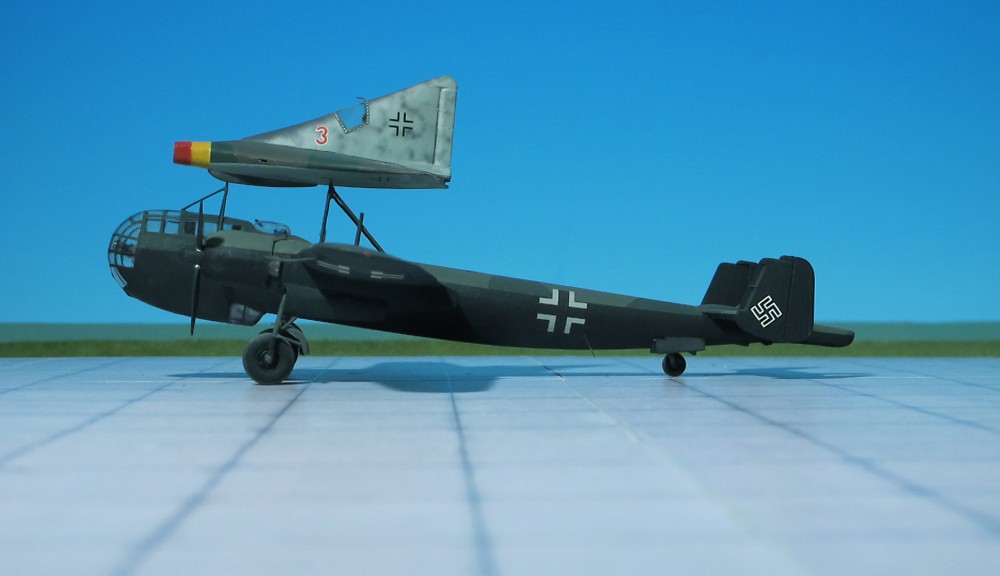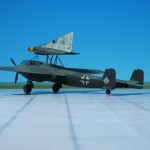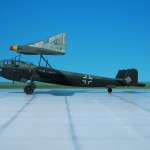TYPE: High-speed experimental fighter project
ACCOMMODATION: Pilot only
POWER PLANT: One Kronach-Lorin coal burning ramjet, power output unknown
PERFORMANCE: 1.025 mph (estimated)
COMMENT: The Lippisch P.13a was an experimental ramjet-powered delta wing interceptor aircraft designed in late 1944. The aircraft never made it past the drawing board, but testing of wind-tunnel models in the DVL (Deutsche Versuchsanstalt für Luftfahrt) thigh-speed wind tunnel showed that the design had extraordinary stability into the Mach 2.6 range. As conventional fuels were in extremely short supply by late 1944, Lippisch proposed that the P.13a be powered by coal. Initially, it was proposed that a wire-mesh basket holding coal be mounted behind a nose air intake, protruding slightly into the airflow and ignited by a gas burner. Following wind-tunnel testing of the ramjet and the coal basket, modifications were incorporated to provide more efficient combustion. The coal was to take the form of small granules instead of irregular lumps, to produce a controlled and even burn, and the basket was altered to a mesh drum revolving on a vertical axis at 60 rpm. A jet of flame from tanks of bottled gas would fire into the basket once the P.13a had reached operating speed (above 200 mph). The aircraft started on a trolley by using solid-fuel rockets or by towplane. For tests it could be launched by a carrier aircraft. In order to test this unorthodox design a test glider DM-1 was built by students from technical faculty of Darmstadt and Munich (DM 1 = Darmstadt-München 1). Furthermore, Film footage exists which shows a gliding test of a scaled-down model of the Lippisch P.13a. These tests began in May 1944 at Spitzerberg, near Vienna, before Nazi Germany collapsed (Ref.: 23).
























